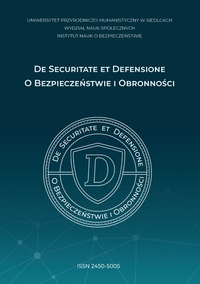ISAF Mission in Afghanistan as an Example of Crisis Response and Peace Enforcement Operations
DOI:
https://doi.org/10.34739/dsd.2023.02.07Keywords:
Afghanistan, conflict, crisis response operation, NATO, peace, terrorismAbstract
The attack on the WTC in New York on September 11, 2001 is a breakthrough date in the history of terrorism and conflicts in the modern world. It was an unprecedented example of an asymmetric attack by a weaker party on a hyperpower aspiring to play a dominant role in the politics of the modern world. The terrorist attack in New York forced the creation of an international anti-terrorist coalition, which launched an armed intervention in Afghanistan to eliminate the Al-Qaeda terrorist network and the Taliban supporting it. The basis of ISAF operation was guaranteed by the provisions of the agreement concluded in Bonn in December 2001, with the Afghan side and based on UN Security Council Resolution 1386, establishing peacekeeping operations in accordance with Chapter VI of the United Nations Charter. Therefore, the ISAF mission was a typical crisis response operation (AJP 3.-4), i.e., a peace support operation (AJP 3.-4.1), and precisely due to its legal basis and objectives, a peace enforcement operation.




